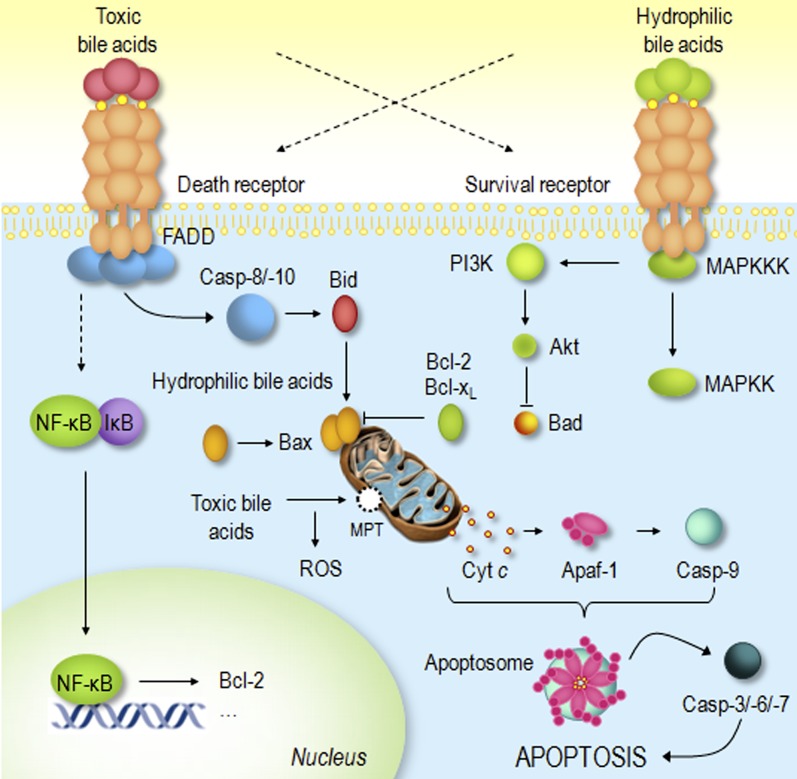Fig. 1.
Schematic representation of bile acid modulation of death and survival transduction pathways. Toxic bile acids induce apoptosis by activating both ligand-dependent and -independent death receptor oligomerization. The activation of death receptors by bile acids invariably signals the mitochondrial pathway of apoptosis in type II cells, such as hepatocytes. Moreover, toxic bile acids may directly target mitochondria, either through induction of the MPT and ROS production or activation of pro-apoptotic Bcl-2 family members. Finally, hydrophobic bile acids partially activate death-receptor-dependent survival pathways, such as the NF-κB. Hydrophilic bile acids do not induce apoptosis as they simultaneously activate survival signaling pathways, such as the MAPK and PI3K, antagonizing proapototic Bcl-2 family members and preventing mitochondrial dysfunction and apoptosis. See text for more complete description. Cyt c, cytochrome c; MAPKK, mitogen-activated protein kinase kinase; MAPKKK, mitogen-activated protein kinase kinase kinase; MPT, mitochondrial permeability transition.

